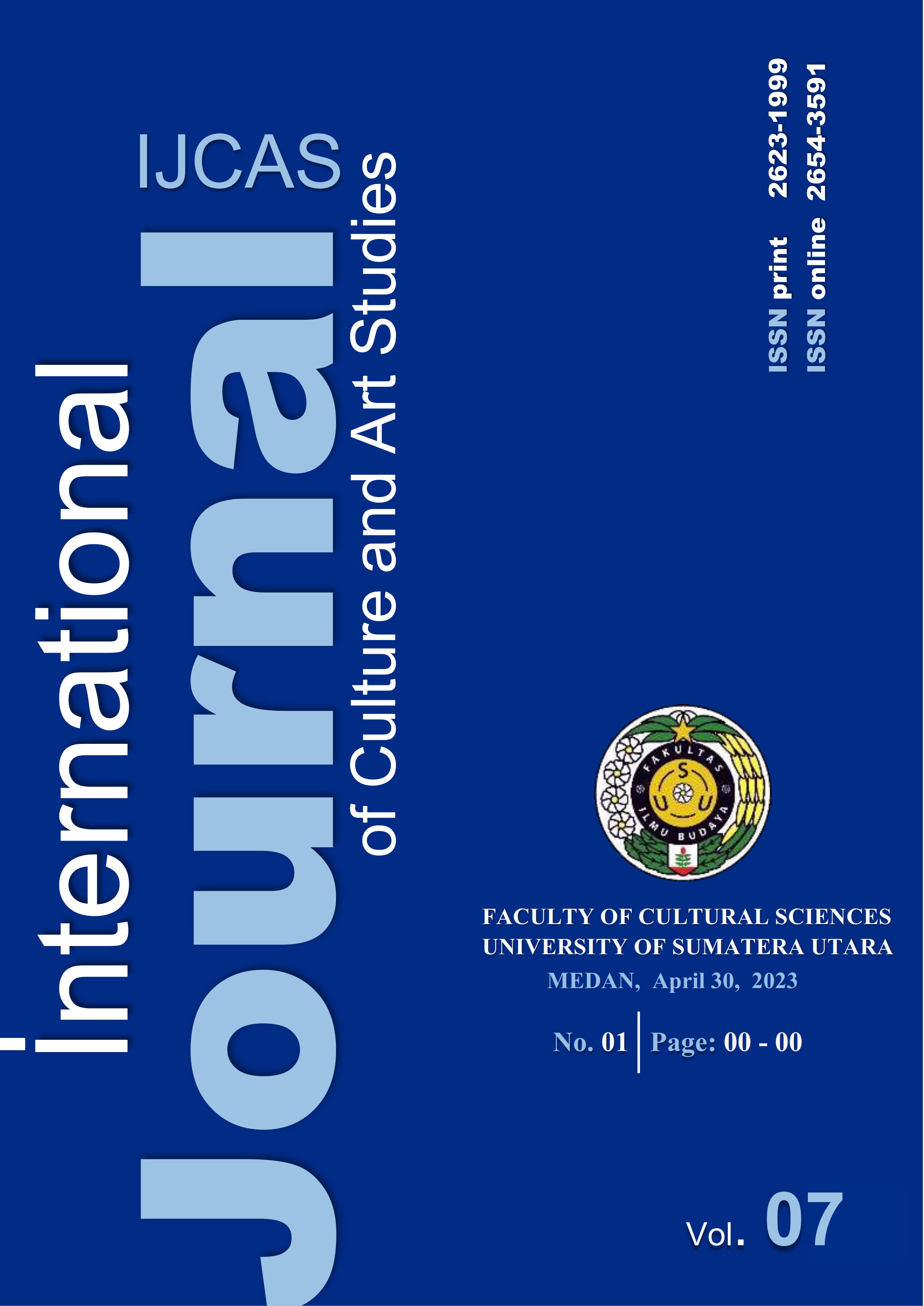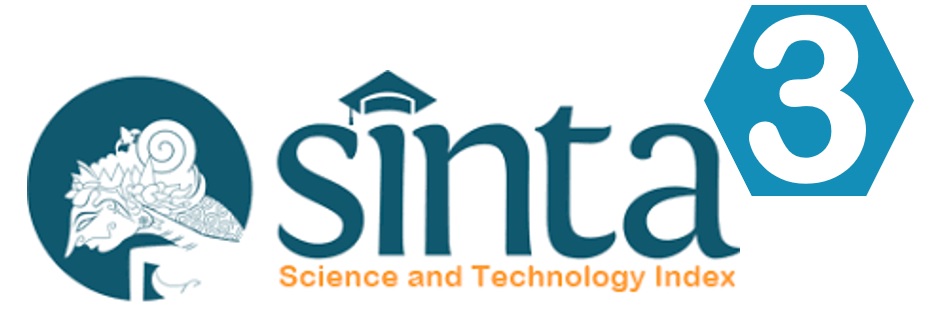Exploring the Costume Styling and Material Composition of the Effutu Festival Costumes
DOI:
https://doi.org/10.32734/ijcas.v7i1.11499Keywords:
Costumes, Performance costumes, Effutu festival costumes, Costume styling, Material compositionAbstract
This study investigates the costume styling and material composition of Effutu festival costumes. It is delimited to Effutu festival performance costumes. The qualitative design was adopted. The ethnography approach was employed through narrative analysis and oral history. Unstructured interviews and on-site direct observations were the qualitative data collection instrument used for the data collection. The narrative analysis was used to analyse the data. The findings revealed that historically costumes are seen as relics that can tell the story about the exploits and traditional mythologies of the communities. Again, costumes that materialise culture and identities do not just mirror pre-existing sets of ideas or symbolic systems but facilitate values as ‘they form part of an ethnohistorical repository of knowledge. The findings further revealed that, costume styling could be categorised into Royal, Ritual, Asafo (war/battle), Generational, Women ensembles (Adzewa costumes) and Fanciful costumes. The basic material composition of costumes includes fabrics (both applied and structural designs), leather, horsetail, metal helmets, pillows, kaolin, beads (plastic and glass), mpoboa (shoes), symbolic colours and other material collaboration. It is recommended that costumes used for the Effutu festival be recorded and digitalised for future reference.
Downloads
References
Adjepong, B., & Obeng, P. (2018). The role of performing arts in Ghanaian society and its implication for formal education in primary schools. European Journal of Education Studies, 5(6)
Aksana, N., Kısaca, B., Aydına, M., and Demirbuken,S., (2009). Symbolic interaction theory World Conference on Educational Sciences, Gazi University.
Bogden, R.C and Biklin,S.K. (1998). Qualitative Research in Education. An Introduction to Theory and Methods,Boston.Alley and Bacon Inc.MA02194
Bouttiaux A-M, Sorber F, Custem A, and Mack J. (2008). African Costumes and Textiles: From the Berbers to the Zulus. Museum Anthropology Review, Vol 4, No 1 2010. Milan, Italy. Reviewed by Juliette Leeb-du Toit.
De Fina, A. and Georgakopoulou, A. (2019). The Hand Book of Narrative Analysis. USA, John Wiley and Sons, Inc.
Ghunney, E. A. (2015). Gyamkaba: An original composition derived from Asafo songs of Aboakyer festival of Winneba. Unpublished MPhil. Thesis. University of Education, Winneba.
Gyekye, K. (2002). African Cultural Values, An Introduction. Legon. Sankofa Publishing Company.
Impraim–Swanzy, E. (2015). Recent Discoveries in the Aboakyer Festival of the Effutus- Ghana. Research on Humanities and Social Sciences,5(2)
Kim, S. (2019). A Study on the Effects of Costume Styling, Color and Texture on Character Expression in Movies Focusing on the Movie and J. fash. bus. Vol. 23, No. 4:53-67, Sept. 2019 https://doi.org.10.12940/jfb.2019.23.4.53
Langi, K. C. and Park, S. (2016). An Analysis on Characteristics of Ancient –Indonesian Textiles (II)- Focus on the Techniques and the Patterns of the ‘Sacred Cloths’. Journal of the Korean Society of Costume Online ISSN 2287-7827. Vol. 66, No. 7.
Liu, K., Zhou, S, Zhu, C. and Lü, Z . (2022). Virtual simulation of Yue Opera costumes and fashion design based on Yue Opera elements. Springer. Open Access https://doi.org/10.1186/s40691-022-00300-0
Maclean, A.G. (2020). Asafo Music in Context of Simpa Aboakyer Festival. Research on Humanities and Social Sciences Vol.10, No.14, 2020, ISSN 2224-5766 (Paper) ISSN 2225-0484 (Online). www.iiste.org
Population of the Effutu Districts retrieved at https://www.ghanadistricts.com/Home/District/68.
Schenk, C.T. and Holman R.H. (1980), “A Sociological Approach to Brand Choice: The `Concept of Situational Self ømageâ€, Advances in Consumer Research, 7, 610-614.
Shagrir, L .(2017). Journey to Ethnographic Research. Israel. Springer Brief in Education. ISSN 2211-1921.
Sharma, H. L. & Sarkar, C. (2019). Ethnography research: An overview. International Journal of Advance and Innovative Research, 6 (2), 1-5.
Smith, F. T. and. Eicher, J. B .(1982). The Systematic Study of African Dress and Textiles. African Arts, Vol. 15, No. 3 (May, 1982), pp. 28-29. UCLA James S. Coleman African Studies Center. http://www.jstor.org/stable/3335907. Accessed: 02/03/2011 09:04
Strand, E.A, Frei, M.K, Gleba, M ,Mannering, U, Nosch, L-M, and Skals, I. (2010). New Possibilities−Old Textiles. European Journal of Archaeology 13: 149 DOI:10.1177/1461957110365513 http://eja.sagepub.com/content/13/2/149.refs.html Downloaded on October 26, 2010
Srivastava, N. and Goel, A. (2018). Documentation of traditional costumes, textiles and accessories of Bhotia tribe of Uttarakhand. International Journal of Home Science. ISSN: 2395-7476,IJHS 2018; 4(3): 189-197. www.homesciencejournal.com
Takyi, E. H. (2015). A Comparative Study of the Concept of Atonement in the Aboakyer Festival of the Effutu Tribe in Ghana and the Yom Kippur Festival of the Old Testament: Implications for Adventist Mission Among the Effutu. Dissertations. Retrieved from https://digitalcommons.andrews.edu/dissertations.
Tilley C. (2011). Materializing identities: an Introduction. Journal of Material Culture16: 347. Retrieved from http://mcu.sagepub.com/content/16/4/347.refs.html
Utoh-ezeajugh, T. (2021). Classification Of African Costumes, Make-Up and Body Designs. Academia Letters, Article 847. https://doi.org/10.20935/AL847.
Downloads
Published
How to Cite
Issue
Section
License
Copyright (c) 2023 Kweku Safo-Ankama, Naa Omai Sawyerr

This work is licensed under a Creative Commons Attribution-ShareAlike 4.0 International License.













